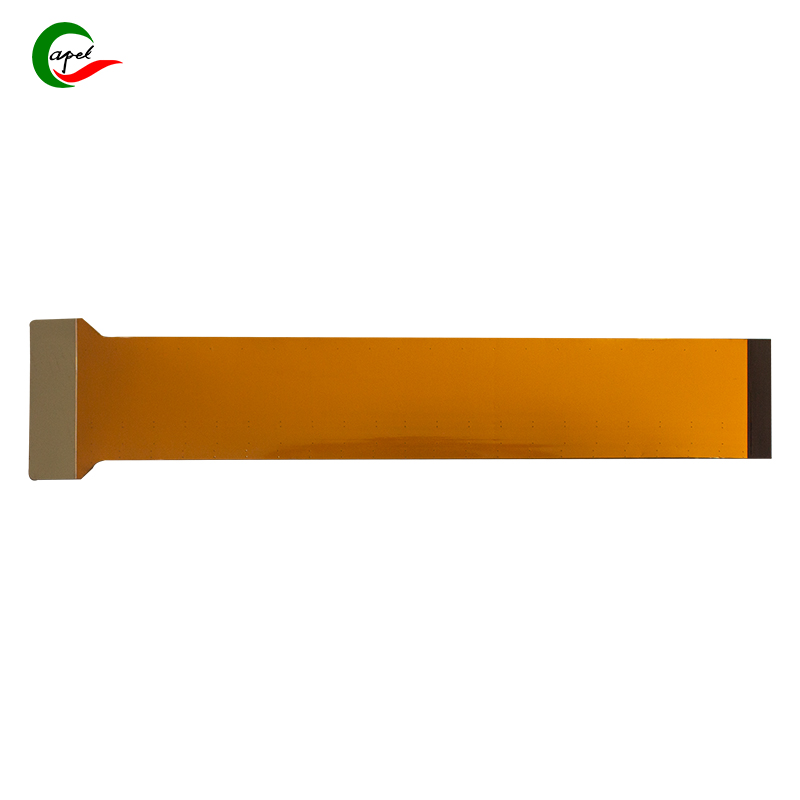Flexible PCBs are designed to bend—that’s their core feature. But you might wonder: “What if I bend them really hard? Will they break or stop working?” Many people have this question. To put it simply: Yes, flexible PCBs will break if bent beyond their limits. Below, we’ll break down when they can withstand bending, when they’ll fail, and how to protect them.
Flexible PCBs aren’t like paper—you can’t fold them a hundred times and still have them work. But they are engineered to handle “controlled repeated bending” (such as the bending of foldable phones or smartwatches during daily use). The key reasons they can bend are:
- Substrate: They use polyimide plastic, which is thin (0.1mm–0.3mm) and elastic. As long as you don’t force it, it won’t crack even when bent 180 degrees.
- Copper circuits: The thin copper lines (0.01mm–0.03mm thick) undergo special treatment during printing. They can stretch slightly when bent, unlike the brittle copper on rigid PCBs.
However, “being bendable” doesn’t mean “unbreakable.” Manufacturers test their flexibility with a “bend cycle test”: they repeatedly bend the PCB (usually 10,000–100,000 times) at a fixed angle (e.g., 90 degrees or 180 degrees) to see when it fails. Most flexible PCBs pass tests of 50,000+ bends—enough to last over 5 years in devices used daily.
Flexible PCBs will break if bent in ways outside their design scope. Here are three common scenarios where “hard bending” causes damage:
Every flexible PCB has a “minimum bend radius”—the smallest circular radius it can be bent into without damage. For example:
- A thinner flexible PCB (0.1mm thick) may have a minimum bend radius of 1mm (roughly the size of a pinhead).
- A thicker one (0.3mm thick) may require a radius of 3mm (like the size of a pencil eraser).
If you bend it to a radius smaller than this—for instance, wrapping a 0.1mm-thick PCB around a toothpick (radius 0.5mm)—the copper lines will stretch too much and break. You might not see the crack immediately, but the signal will be interrupted, and the PCB will stop working.
- Example: If you wrap a smartwatch’s flexible PCB (minimum radius 2mm) around a toothpick (radius 0.5mm), the copper lines will break. This could cause the watch to stop tracking heart rate or display a blank screen.
Most flexible PCBs are designed to bend in only one direction (e.g., up and down, like a foldable phone opening and closing). Bending them sideways or twisting them (like wringing a towel) will put excessive stress on the copper circuits.
- Damage principle: Twisting pulls the copper lines in two directions at once, causing them to peel off the polyimide substrate. Even a twist of 30 degrees or more can cause this damage.
- Example: If you twist the flexible PCB connecting a laptop’s trackpad to its motherboard (designed to bend up and down, not twist), the PCB will break, and the trackpad will stop working.
An occasional “hard bend” might not break it, but doing it repeatedly will cause problems. For example:
- A flexible PCB that can withstand 50,000 “gentle 180-degree bends” may only last 1,000 bends if each one is forceful.
The copper lines will gradually “fatigue”—just like a paperclip that breaks after repeated bending. You’ll notice small cracks in the copper, and the PCB will work intermittently (e.g., a wireless earbud that cuts out audio randomly) before failing completely.

You don’t need to treat flexible PCBs like glass, but you shouldn’t abuse them either. Here are three simple ways to keep them working:
You don’t need to measure the radius—use common sense:
- If you feel like you’re forcing the bend (e.g., pressing hard to wrap it around a small object), stop.
- For devices like foldable phones: Don’t try to fold them in the reverse direction (e.g., forcing a Samsung Z Fold—designed to fold outward—to fold inward). The internal PCB is only meant to bend in one direction.
Stick to the “natural” bending direction of the device:
- When wearing a smartwatch, don’t yank the band sharply to the side.
- When repairing a device with a flexible PCB (e.g., wireless earbuds), hold the PCB flat while moving it—don’t twist it to fit into a tight space.
You don’t need to coddle it, but don’t 折腾 it for no reason:
- Don’t repeatedly open and close a foldable phone just for fun—each bend shortens its lifespan.
- When storing a device with a flexible PCB (e.g., a portable scanner), keep it in its “neutral state” (not bent or folded) to reduce stress on the PCB.
Flexible PCBs can withstand bending within their design limits (such as normal use of a foldable phone) and won’t break easily. However, they will break if bent too hard, too sharply, or in the wrong direction. The good news is: As long as you use your devices as intended, you’ll never have to worry about the flexible PCB breaking. They’re designed to be durable—just not unbreakable.
related link:
